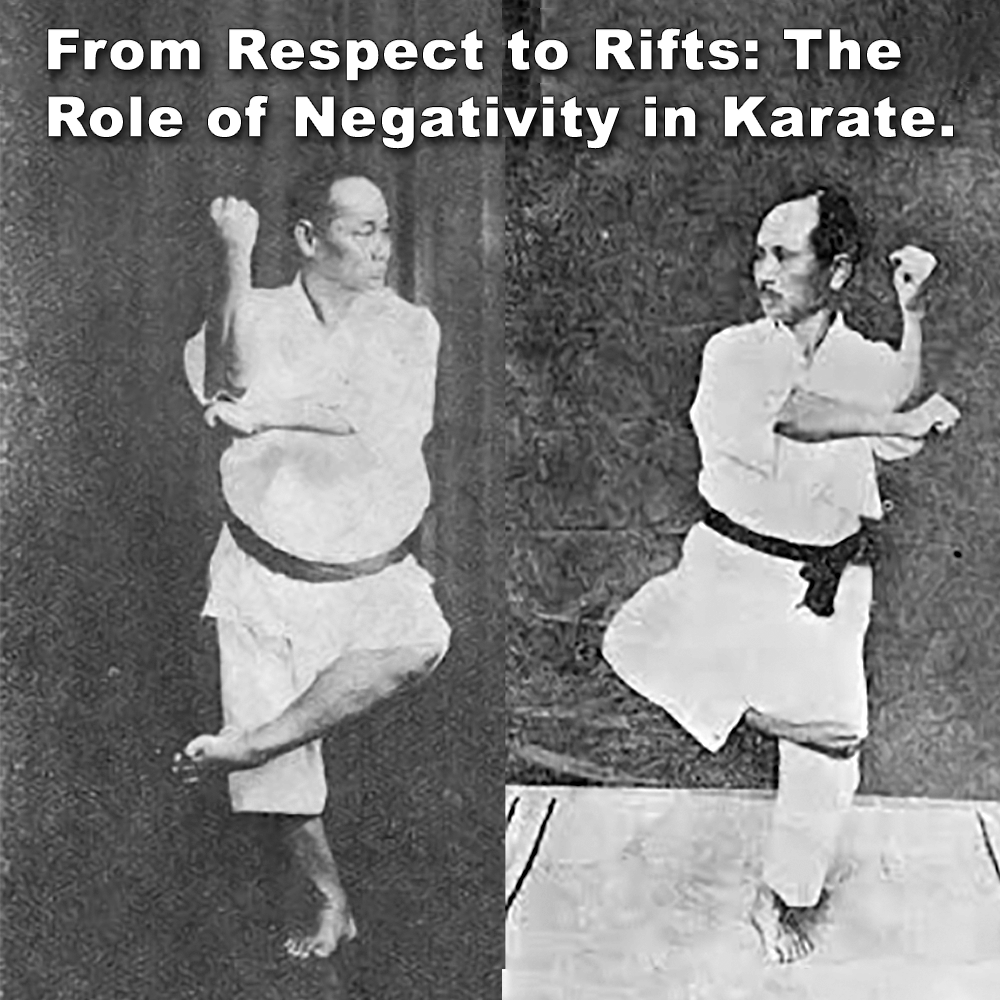
From Respect to Rifts: The Role of Negativity in Karate.
Posted by ADAM CARTER on JUN 04, 2024

From Respect to Rifts: The Role of Negativity in Karate.
(Approx 2 minute 15 second read)
Traditional karate, with its rich tapestry of styles and history, is often seen as a domain of discipline and unity. However, beneath the surface lies a landscape fractured by disagreements and divisions.
A poignant example is the notable dislike between two karate legends, Funakoshi Gichin and Motobu Choki. Despite both being pioneers of karate, their relationship was marred by deep-seated animosity. Funakoshi, known today as the father of karate-do, and Motobu, a renowned fighter with his own unique approach, had vastly different philosophies and methods.
This historical rift highlights the personal and ideological conflicts that have long existed within karate and sets the stage for understanding the ongoing divisions shaping the martial arts today.
A few years ago I decided to put together some of my notes that I had kept since I started karate back in the 1970’s. They were initially just for my students, a little guidance here and there. It seemed that others enjoyed the articles and I now try to write more often for a larger audience.
I’ve certainly noticed over the last few years where I have been writing regularly, that many people just want to have an argument, or post a controversial comment. Some using profanity and racial slurs. Maybe just to get some kind of recognition? Even some well know instructors just seem to want have a disagreement over the most ridiculous thing.
This theme seems to be prevalent in the martial arts as a whole. I don’t know whether it’s ego or just the chance to be heard.
Rant over. Moving on.
One key source of division in the martial arts is the multitude of lineages and styles. This diversity, while enriching, often fosters heated debates about which style reigns supreme, is the strongest, or embodies true karate.
Disagreements over technical execution, kata interpretation, and training philosophies often lead to divisions and continuous arguments.
Karate’s evolution from self-defense to a competitive sport, in my opinion, fuels much of this division. Different organizations and associations have developed their own rules and formats.
Practitioners and instructors from various styles and organizations compete for recognition, and disagreements over training methodologies, further fracture the scene.
The human element also plays a role too. Instructors and organizations may compete for influence, resources, and recognition. Personal rivalries, organizational politics, and disputes over rank and lineage can further undermine the sense of unity.
Karate’s history is interwoven with the cultures of China, Okinawa, and Japan. Disagreements about historical practices or origins, cultural differences in training methods and etiquette, all create barriers to understanding and collaboration.
I think that many styles split because of this, and from this sometimes new Ryu-ha develop, I have personally witnessed this over the years, and for the students and instructors it can be a fraught time wondering where things are going.
It was the same in the 1970’s, before any kind of social media, and it’s the same today. Character building? Yeah right.
Is there a path towards more unity? Perhaps fostering a deeper understanding of karate’s history and appreciating the strengths of different styles could be a starting point. Most importantly, cultivating tolerance for each other’s viewpoints and traditions is kind of important.
